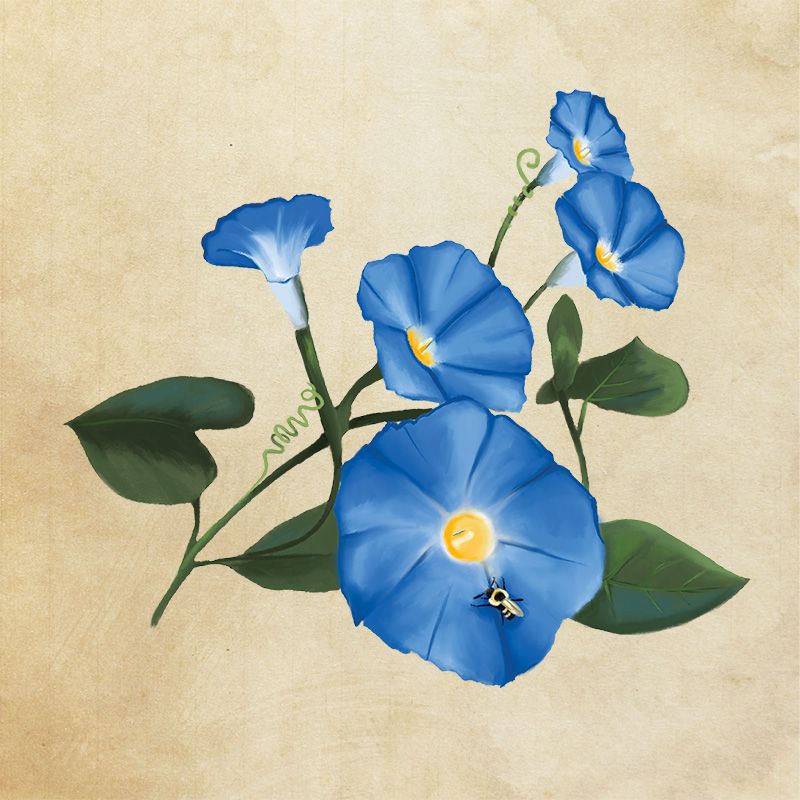The colorful flower has deep roots in the Lowcountry

Growing wild or cultivated for the garden, these profuse plants greet each summer day with a glorious “good morning” of colorful, trumpet-shaped flowers. Some 1,400 species of morning glories grow as perennials in temperate and tropical regions, while in northern climes they are nurtured as annuals. Numerous varieties are found in the Lowcountry—from the pervasive purple bindweed (Convolvulus arvensis) seen along roadsides and thickets to the elegant, deep blue Ipomoea purpurea, commonly known as “Heavenly Blue.” More than just a pretty face, one variety (Ipomoea batatas) includes the sweet potato, esteemed for its delicious edible root. Uncover more about this showy, deep-rooted climber
LIFE CYCLE Opening early in the morning and closing in late afternoon, this plant is called “the life of man” in rural England because the progress of each daily bloom illustrates the stages of life—with the dawn bud symbolizing childhood, the fully opened midday flower representing adulthood, and the wilting blossom at day’s end depicting old age.
ROOT OF THE MATTER Native Americans historically used the roots, leaves, and juices of Ipomoea for medicines as well as in some tribal rites. Similarly, African cultures, including Gullah people, used the plant as a curative. The powerful “High John the Conqueror” root, which is believed to bring love, luck, and power, is made from morning glory.
COVERED IN GLORY Because of their fast growth, heat tolerance, and ability to thrive in poor soil, morning glories make excellent climbing ornamentals. Ranging in color from white, pink, and crimson to purple and azure blue, they bloom as long as the temperature remains above freezing. Their blooms attract butterflies, bees, and hummingbirds.
TIE THAT BINDS The family name comes from the Latin, covolvo, meaning “to intertwine,” and the genus name Ipomoea comes from the Greek word for “wormlike.” These tenacious vines easily wind their way over walls, trellises, and fences. The bad news is that some members of this profuse family are considered invasive, with such derisive common names as “devil weed,” “hellweed,” “strangleweed,” and “witches’ shoelaces.” Naturalist Mark Catesby wrote of the “Purple Bindweed of Carolina,” in his Natural History of Carolina, Florida and the Bahama Islands.
GIVING SUPPORT The white-bloomed beach morning glory, also called “railroad vine” for the way it creeps along the surface of dunes, has an extensive deep root system that provides a natural anchor for the soft, shifting sands. Likewise, the saltmarsh morning glory helps stabilize the upper edges of its habitat. Given its natural tolerance of water, the flowers can also serve as a colorful ornamental for low areas with moist soil.